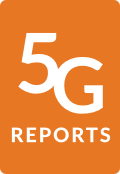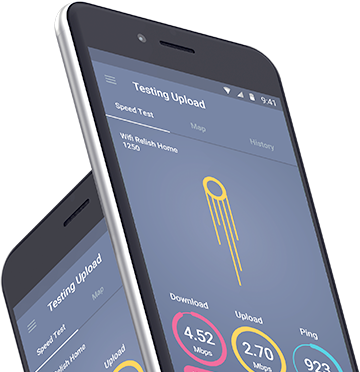Looking at the 5G Experience in four metropolitan areas — Brisbane, Melbourne, Perth and Sydney — Telstra dominates our city-level awards table, racking up 12 outright wins out of a possible 28 awards, along with 13 joint wins. Meanwhile, Optus achieved two outright wins — both for 5G Download Speed — along with 14 joint wins, mostly for our experiential categories: 5G Video Experience, 5G Games Experience and 5G Voice App Experience. On the other hand, Vodafone did not pick up any outright wins, but is a joint winner for 11 city-level awards, all of which are for our experiential categories.
Telstra wins outright for both 5G Availability and 5G Reach in all four cities. Our Telstra 5G users in Brisbane spent an impressive 26% of their time connected to 5G. Telstra’s lowest city-level score — 14.5% in Perth — was higher than Optus and Vodafone’s best scores for 5G Availability. Optus’ scores ranged from 10.2% in Sydney to 8.8% in Brisbane, while Vodafone’s were between the 6.5% reported by our users in Melbourne and 4.9% in Perth. Shifting to 5G Reach — which is measured on a 10 point scale — Telstra’s scores exceeded the 5.5 mark in all but Perth, where Telstra users reported a score of 4.7 points. Optus’ scores were in the 3.5-3.7 point range in all but Sydney (4.2 points). Our Vodafone users found 5G in roughly a quarter of the locations they visited in three cities, with scores between 2.3 and 2.5 points in Brisbane, Perth and Sydney, but its score came in at 2.9 points in Melbourne.
Shifting to 5G Download Speed, Optus, the winner of the national award, wins outright in both Melbourne and Sydney, while statistically tying with Telstra in Perth. Telstra wins the remaining award for 5G Download Speed in Brisbane. Optus’ scores in Sydney and Melbourne were well over the 300 Mbps mark, but under 200 Mbps in Brisbane and Perth. Telstra’s scores ranged from 184.4 Mbps in Perth to 255.8 Mbps in Brisbane, while Vodafone’s were between 123.9 Mbps in Perth and 170.3 Mbps in Melbourne.
Looking at 5G upload speeds, Telstra wins outright in Brisbane and Perth, but statistically ties with Optus in Melbourne and Sydney. Optus’ scores in the latter two cities (21.3 Mbps in Sydney, 19.7 in Melbourne) were roughly double those in Brisbane and Perth, while Telstra and Vodafone’s scores were less variable, ranging between 15.7 Mbps and 19.7 Mbps for Telstra and 11.1-13.5 Mbps for Vodafone.
Our users saw little difference across cities between the three operators on 5G experiential metrics — all three are joint winners in all four cities for both 5G Video Experience and 5G Voice App Experience. In addition, all three operators placed in the same categories across these cities for both these awards — in the Excellent (75 or above) category for 5G Video Experience and the Good (80-87) category for 5G Voice App Experience.
Turning to 5G Games Experience — Telstra was the only operator to win a city award outright. It did so in Sydney, with a score of 87.4 on a 100 point scale, and also earned the only Excellent (85 or above) rating across all operators and cities. In Melbourne, Optus and Vodafone share the top spot for 5G Games Experience, while our users reported three-way ties in Brisbane and Perth. Perth was the only city where our users reported a Fair 5G Games Experience (65-75) and they did so across all three operators. In the other cities all operator scores placed in the Good (75-85) category with the exception of Telstra’s Excellent rating in Sydney.
Select any region or city below to display individual breakdown




